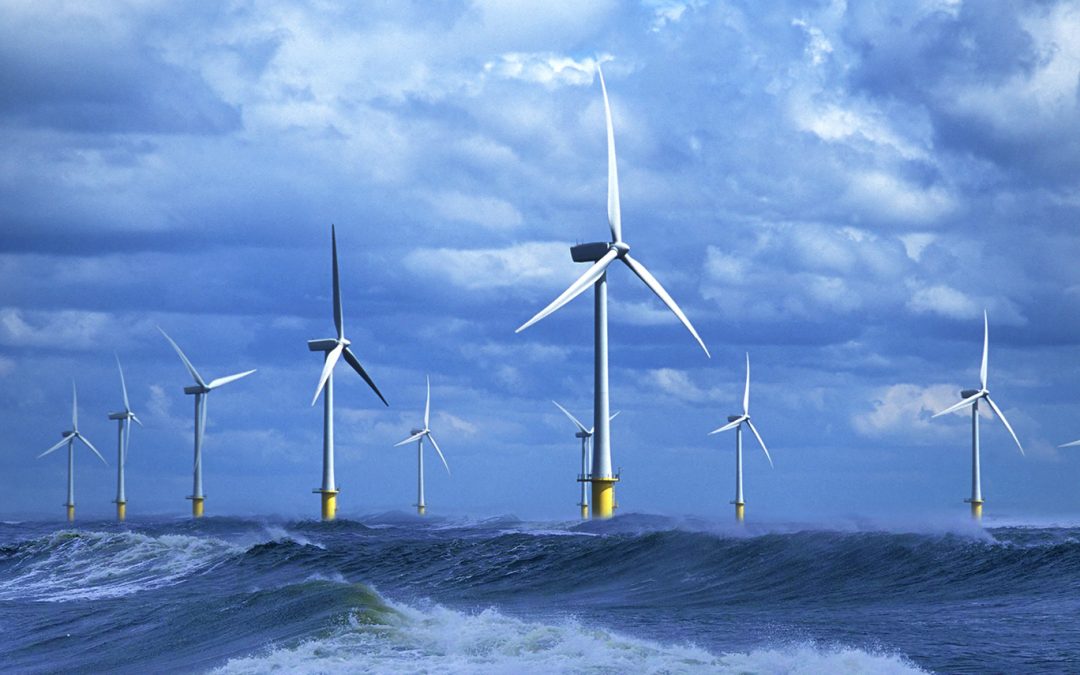Crown Estate Scotland has announced the successful bidders under its 2022 ScotWind Auction, which marked the first time in a decade that plots of Scottish seabed have been auctioned to renewables developers.
The results were announced this morning (17 January), with 17 projects selected out of a total of 74 applications. Successful applicants have been offered the chance to reserve the rights to specific areas of seabed and, subsequently, to put forward a full agreement for a wind farm. If any applications don’t make it this far, Crown Estate Scotland will offer the rights to the next highest-scoring applicant, as it seeks to maximise the nation’s offshore wind generation capacity.
Collectively, the selected projects have a total capacity of 24.8GW. This is more than double the 10GW that Crown Estate Scotland was forecasting as a minimum for this auction round – which is the first since the management of offshore wind rights were devolved to Scotland. Of the 24.8GW, more than 16GW has been allocated to floating wind farms, which can be built in deeper waters than their fixed counterparts.
Ten projects are using floating wind technology, six are fixed-bottom, and one involves installing both floating and fixed foundations, meaning more than half of the total capacity has been awarded to floating wind farms.
The biggest single project is a 3 GW floating wind proposal by Iberdrola’s Scottish Power Renewables, followed by BP’s fixed-bottom 2.9 GW project. The successful bidders also include Shell, Ocean Winds, Vattenfall, SSE Renewables, Falck Renewables, DEME, BayWa, Northland Power, Magnora, and Offshore Wind Power (a joint venture between Macquarie’s Green Investment Group (GIG), TotalEnergies, and RIDG).
The projects will cover a total of 7,000 square kilometres – 1,600 kilometres less than the Scottish Government has set aside, in total, through its Marine Sector Plan last August.
Statement from Scottish Fishermen’s Federation
Responding to Crown Estate Scotland’s announcement, Elspeth Macdonald, chief executive of the SFF, said “While it is clear that substantial additional offshore renewables will be required for Scotland to meet its net zero target, we are understandably anxious and concerned about the potential impact of these and future offshore renewables projects on the Scottish fishing industry.
“The 17 projects announced today by Crown Estate Scotland have been offered option agreements which reserve the rights to specific areas of seabed amounting to in excess of 7,000 km2. This is a vast area, and the majority of the successful projects are for floating offshore wind, which creates even greater spatial and co-existence problems for fishing than fixed turbines do.
“Through the SFF and its constituent associations, the industry has always sought to engage constructively with offshore developers, and will continue to do so.
“However, it needs to be recognised at the highest levels within the renewables industry and in Scottish Government that catching fish is already a climate-smart industry that produces nutritious, high-protein food with an extremely low carbon footprint. It is also an industry that supports many jobs and businesses ashore and is vital to Scotland’s coastal communities. In the rush to energy transition, it is vital that our industry’s voice is properly heard and that the fleet’s access to Scotland’s productive fishing grounds is protected.
“In particular, proper scrutiny must be given to developers’ claims that offshore windfarms and fishing activity can co-exist with little change to existing patterns of activity, since our experience to date shows very strongly that the opposite is the case. Fish are not uniformly distributed in our seas – the fleet cannot simply move somewhere else. We need genuine and meaningful engagement, mutual respect and an even-handed approach to planning, consenting and licensing. Marine renewables are clearly part of Scotland’s transition to net zero, but so is fishing. For this to be a just transition, there must be space for both to succeed.”



Recent Comments